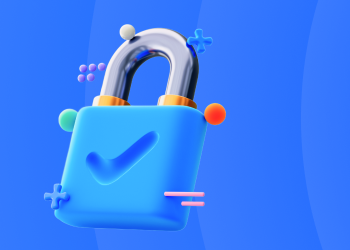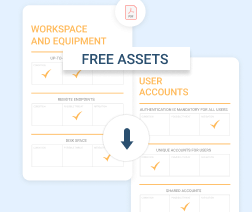Are you gearing up for 2026? The new year is just around the corner and now is the perfect time to start prioritizing security. By taking action today, you'll ensure that your business and customers stay safe and secure well into the future.
Start by setting clear security priorities. These will help you defend against ransomware and other cyber threats, prevent data breaches, and maintain business continuity.
Next, use these priorities to make a detailed plan to accomplish your security goals, execute it, and track your results. If you fall short of achieving your goals, consider why this happened. At this point, review and revise your goals and then keep moving forward.
If you're looking for ideas, here are three security priorities to consider as you prepare for the new year.
Watch this 4-min video as an alternative to reading the article:
1. Threat Detection and Response (TDR)
Your ability to identify, respond to, and prevent cyber threats from infiltrating customer organizations is vital to your long-term success. In a recent report, researchers found that 97% of organizations globally aren't ready to deal with modern cyber threats. Along with this, small organizations are often less prepared for these threats than big ones.
Your ability to identify, respond to, and prevent cyber threats from infiltrating customer organizations is vital to your long-term success.
If cybercriminals attack organizations that know nothing about cyber threats, they'll likely succeed. Learn about the cyber threats your customers face by conducting surveys and questionnaires. You'll get insights and feedback that you can use to continuously improve your TDR capabilities.
Integrate TDR capabilities into your portfolio or enhance your existing threat detection and response services. With your TDR services, customers can close security gaps. Plus, they'll stop attacks that otherwise would lead to data breaches and other security issues.
Further reading Responding to Cyberattacks: 6 Top Tips
Assess vulnerabilities and threats, network security, workspace and equipment security, documentation, and more. The pack includes:
- a ready-to-print PDF file
- an Excel file to help create a customizable assessment resource
2. Continuous Security Monitoring and Alerting
With continuous security monitoring and alerting, you can identify and address potential security threats in real time and avoid the revenue losses and brand reputation damage associated with cyberattacks.
Automatically monitor security controls, vulnerabilities, and cyber threats using threat intelligence. Track your security systems so you can identify and resolve security issues in their early stages and stop data breaches from happening.
Endpoint protection and detection and response platforms are key. Offer endpoint security monitoring to track and manage the status of customer devices. Meanwhile, endpoint detection and response (EDR) lets you analyze and remediate cyber threats.
Provide security information and event management (SIEM) services. These deliver 24/7/365 security alerting. If a security incident happens, you can address it before it results in long-lasting harm.
3. Security Compliance
Learn about security regulations so you can protect your data, limit risk, and avoid fines, penalties, and lawsuits. For example, if you serve military organizations, stay up to date on ITAR compliance. When you do, you can protect against data breaches and compliance regulations that hurt your customers and your company.
Further reading HIPAA Backup Compliance: The Basics Explained
Teach your customers about compliance for their respective industries. Explain what will happen if customers choose not to comply with certain measures. Give customers insights into how your company will help them secure their data properly. Update your existing services or offer new ones that meet the latest compliance requirements.
Use compliance standards to create risk assessment plans for your customers. If a customer faces a security problem, you'll have a plan in place to help them deal with it. This plan can be reviewed and updated periodically. It will help your customer maintain seamless operations in accordance with compliance mandates.
Use compliance standards to create risk assessment plans for your customers.
Give Security the Attention It Deserves in the New Year

The cyber threat landscape is constantly changing. Today, generative artificial intelligence (AI) and other sophisticated technologies present new risks. At the same time, cybercriminals are always on the lookout for new ways to attack MSPs and their customers.
To address these and other security challenges, prioritize TDR, continuous security monitoring and alerting, and compliance. That way, you can avoid security problems that disrupt your company and its customers and capitalize on opportunities to expand your security services, fulfill customer requests, and drive sales and revenues.




